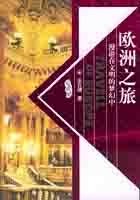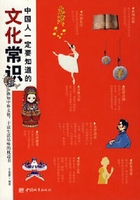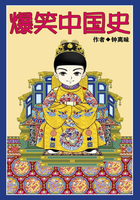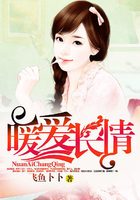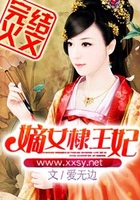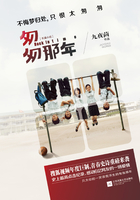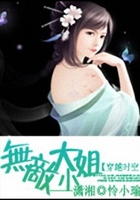中国古代建筑Ancient Chinese Architecture
在中国大地上有许多造型优美、色彩绚丽的古代建筑,这些建筑在世界建筑史上占有重要地位。本篇介绍独特的木结构、庭院式建筑的平面布局、各种屋顶样式及其丰富的色彩。
1.中国古建筑有什么基本特征?
What is the basic feature of ancient Chinese architecture?
Visitors who come to China for the first time may be struck by some traditional Chinese buildings with their curved roofs, bold colors and intricate outlines. They may wonder how the Chinese ever came up with this unique architectural style. In order to appreciate ancient buildings in China, visitors should know the prominent feature of such buildings as follows:
a. Most buildings are made of wood. A timber framework is a basic feature of ancient Chinese architecture.
b. Courtyard composition and layout is another feature. A courtyard is a space enclosed by walls, or a yard surrounded by buildings.
c. Varied roof patterns have been added to enhance the beauty of these ancient buildings.
d. Paint is much used as an architectural ornament.
e. Ancient Chinese buildings keep in harmony with their natural surroundings.
Notes:1)architectural建筑学的;2)architecture建筑学;3)intricate错综复杂的;4)outline外形;5)prominent显著的;6)framework构架;7)enclose围住;8)surround围绕;9)surroundings环境
2.中国古建筑木结构的特点是什么?
What are the features of the timber framework in ancient Chinese architecture?
Ancient Chinese buildings use timber extensively as a building material in addition to bricks and tiles. Chinese wood represents“life.”Moreover, timber was easily available, transportable and practical at that time. The timber framework consists mainly of wooden vertical pillars and crossbeams. They are perfectly interlocked with brackets so that the whole weight of a house is transferred to its foundations through the pillars, beams, lintels and joists. Walls bear no load; they only separate space. The timber framework supports most of the weight of the house. There is an old saying that,“A house still stand even if its walls collapse (墙倒屋不塌).”
Two things are worth attention when you view ancient buildings. One is the wooden tenon (榫), and the end of a piece of wood perfectly shaped to fit into a corresponding wooden mortise (卯) in another piece of wood. This technique was invented 7,000 years ago. The other is the system of support brackets, called dougong (斗拱). These are wooden brackets on the top of a column to support the crossbeam; they rise up level by level from each pillar. These brackets both support the structure and are also a distinctive and attractive ornamentation. This invention came into being about 2,000 years ago, during the Warring States Period.
Notes:1)extensively广大地;2)tile瓦;3)transportable可运输的;4)practical实际的;5)crossbeam横梁;6)interlock使连锁;7)bracket托架;8)lintel楣石;9)joist托梁;10)tenon榫;11)corresponding相应的;12)mortise卯;13)column圆柱;14)crossbeam横梁
3.古建筑的色彩有什么特点?
What are the color features of the ancient Chinese architecture?
Paint is much used on buildings. Initially paint was used on wood to prevent damage from moisture, but gradually paint became an architectural ornament. Ancient palaces and temples tend to have brilliant colors like glazed yellow tiles, red walls and white balustrades. The shining colors make these buildings look grand and impressive. However, colors applied on garden-like buildings or commonplace houses tend to be quietly elegant. These colors give people a nice, cool sense.
The painting on ancient buildings functions as an ornament. In the Qing Dynasty, it commonly fell into three categories as follows:
a. Hexiwucaihua (合细五彩画, Hexi Five-color Decoration): This painting style is applied only to the key buildings in imperial palaces and altars. Usually, a dragon or phoenix is painted on green background, and paint lines are gilded with gold powder or gold foil.
b. Xuanzicaihua (旋子彩画, Circular Color Decoration): This style is extensively applied to government buildings, key buildings in temples, and the attached buildings of imperial palaces and altars. An artist tends to use bright designs and auspicious flowers. In addition, he outlines the designs in ink color and adds some running dragons and strokes. He then draws a pattern in the shape of the Chinese word gui (圭) on the either side of the design center. Inside the“gui”pattern are many other brightly colored designs developed from peony flowers.
c. Suzhou decoration: This painting style originated in Suzhou; later it has developed into two schools: the southern
and the northern. Southern suzhou decoration focuses on bright designs, and the northern on landscape, figures, flowers, pavilions, etc.
Notes:1)balustrade栏杆;2)impressively给人以深刻印象地;3)imperial皇帝(或女皇)的;4)gild把……镀金;5)foil金属薄片;6)additional额外的
4.佛教寺庙内主要有什么建筑?
What are the main buildings in a Buddhist monastery?
Chinese Buddhist architecture consists of temple, pagoda and grotto. It started during the Han Dynasty as Buddhism entered China. In ancient times, many Chinese emperors of different dynasties believed in Buddhism, so Buddhist monasteries or temples were constructed across the country. In the Northern Wei Dynasty, monasteries or temples accounted to more than 30,000 in number. Later, glazed tiles, exquisite engravings and delicate paintings were all used in Buddhist monastery construction. These monasteries and temples were fashioned after the imperial palaces and bore very little resemblance to temples in India or other Buddhist countries.
Chinese monastic buildings usually follow a north-south axis (中轴线). Generally each monastery or temple has three groups of buildings, separated by courtyards or walls. Each group has a main building, which stands on this axis, facing south. The names of the main buildings include the Temple Gate (山门), the Heavenly King Hall (天王殿), the Great Buddha Hall (大雄宝殿) and the Buddhist Scripture Library (藏经楼). Additional buildings are set up on either side of the axis. Living quarters, kitchens, dinning halls and storehouses are usually located on the right side of the main buildings, but buildings on the left side are for visitors.
Notes:1)construct建造;2)account(在数量等上)占;3)ex-quisite精致的;4)resemblance相貌相似;5)heavenly天国的;6)storehouse仓库
5.道教寺庙的特点是什么?

